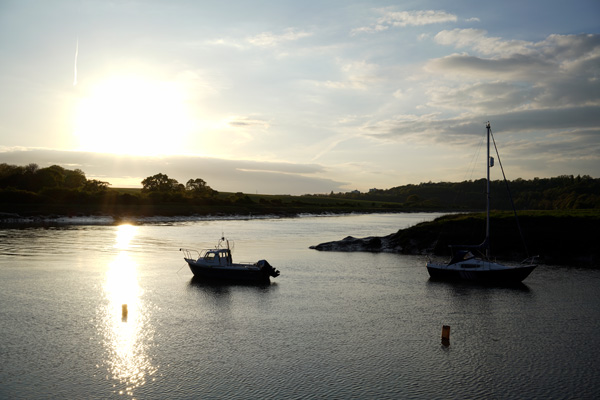Scroll down for previous photography blog posts. For latest posts please click here: Latest Blog Posts
17/07/2017
Easy Way To Cut Tripod Cleaning Time
When you’ve been out and about in muddy environments, cleaning tripod feet can be something of a pain. Sometimes a quick wipe over will do the trick. Other times, a more thorough job might be called for, involving a certain amount of dismantling and subsequent re-assembly.
Alternatively, of course, you can just accept that your tripod will still do its job with a little dirt attached to the feet and legs.
I guess I’m fussy but I like to keep my gear clean – but I’m also a bit lazy about it so I gave a little thought to tackling the issue. The solution, at least for less extreme circumstances and lighter ‘travel’ tripods (my choice is the Manfrotto befree) , proved remarkably simple.
Inside my tripod bag I now keep a small supply of appropriately sized plastic food bags (or similar) and a handful of rubber bands. When the ground is muddy, soft and wet I just slip a bag over each foot and use a rubber band to secure it around the tripod leg. Job done!
The bags can usually be re-used a few times and need no more than a quick wipe over – and they’re inexpensive when they need replacing.
A word of caution: Bear in mind that tripod feet are designed to combat slipping so the bag approach won’t be a good choice in every situation. There’s no point in keeping your tripod clean if it means it, and your camera, are likely to slide off into the unknown!
(Remember only to replace bags when necessary and ensure they are disposed of responsibly, we have an environment to protect.)
mfimage
20/06/2017
Reasons To Carry An LED Torch
A favourite addition to my photographer’s kit is neither a camera, nor a lens or even a photographic accessory. It’s my multi-purpose LED torch. I use one of the Divide+ products from Coleman. The company’s battery lock system means when you take the torch off the shelf you don’t always find the battery is drained just when you want to use it.
With a beam that can extend beyond 300 metres and two power settings, I find it’s a pretty versatile tool when a little extra light is needed to add some highlights to a close-up, maybe brighten a foreground, add impact etc when you don’t want to use a strobe or haven’t got one to hand.
Oh yes; it is also quite handy for seeing in the dark on those night shoots!
More info. on Coleman at: http://www.coleman.eu/uk/c-365-electric-lights.aspx
Here’s a floral close-up, shot using an aged Helios 50mm, M42 manual lens on a dull day with added light from the Coleman.
mfimage
06/06/2017
An Hour Is A Long Time In Photography
If you are interested in photography, chances are you are pretty familiar with the special characteristics of the golden hour (after sunrise and before sunset) and the blue hour (after sunset). Among my recent shoots, the timing of one serves to demonstrate just how quickly the light changes from one towards the other.
The shoot in question saw me arrive at my location around 45 minutes before sunset and I stopped clicking the shutter very soon after the sun dropped below the horizon.
The two images below are unedited JPEGs straight from the camera. The only adjustment is to compress the images for web viewing.
The first image was taken at 19:25 and was the first of the session. The second was timed at 20:40 and was the last image I made before packing up the camera and tripod for the night.
Conclusion: It has got to be worth standing in the same place for a little over an hour to get this range of light and mood in one session.
22/05/2017
You Can’t Zoom With Your Feet Over Water
I’m a great fan of ‘zooming with your feet’. It’s an approach which lets me mainly use my favourite 35mm lens to capture the scene, whether it’s a landscape or a close-up street shot. More often than not, when I am out and about around Bristol, I will be walking for a fair length of time. I like to travel light so extra lenses, tripods and other gear paraphernalia are to be avoided when possible.
There is, however, a problem. There’s a fair amount of water in Bristol city centre (mainly the harbour!) and it’s a bit tricky zooming with your feet over water.
For those occasions when the 35mm can’t get me close enough, I carry the Sony RX100 (Mark 1). It will zoom to 100mm in RAW & JPEG mode. Switch to ‘Fine’ and the Clear Image Zoom takes you out a fair bit more – from a 3.6 x (28-100mm equivalent) zoom to 7.2.
The picture of Robinson’s Warehouse, currently showing in ‘Latest Image’, is from the RX100 and it’s a low resolution version for web viewing speed. The original is 33cm wide at 300 pixels/inch and the quality holds up reasonably well for print purposes. OK, at 100 per cent it’s well short of the IQ I would have got from the 35mm lens, if only I could have shot on stilts from the water – but I like the image and, on this occasion, having it in the file seems better than pixel peeping and ditching it.
mfimage
08/05/2017
SWPA Exhibition – Inspiration & Motivation
The Sony World Photography Awards exhibition at Somerset House, London ended on 7 May. As always the show was both inspiring and motivational.
The winning entries, selected from submissions by photographers around the world, displayed technical ability, powers of observation, creativity and the magic that can follow when skill combines with being in the right place at exactly the right time.
For those, like me, who entered but did not make the final cut they are also truly motivational. Along with the learning that comes from viewing photographic excellence is recognition that you, too, can be a winner. It’s just a matter of keeping shooting, keeping growing as a photographer and keeping making submissions. I’ll be back next year!
If you missed the exhibition you can still check out the images at: https://www.worldphoto.org
mfimage
03/05/2017
Adapt & Survive – A Good Motto For Old Lenses
Most talk of lens adaptors these days seems to centre around more sophisticated equipment capable of maintaining electronic contacts between non-native lenses and, for example, mirrorless cameras. Depending on camera choice, these adaptors can provide the opportunity to combine a vast array of current and legacy lenses with today’s sensor technology. Against this background, it’s easy to forget that older manual focus lenses, devoid of electronics, can readily be brought back to life with the benefit of adaptors that simply enable different lens mount systems to connect together.
The cost of such mechanical adaptors is typically just a few pounds, rather than the £ hundreds associated with their more high tech cousins.
I have some (very) old, and inexpensive, M42 lenses. I keep my aged Minolta Dynax camera, for those occasions when the yearning to use film kicks in, alongside my more recent digital gear. A couple of dedicated adaptors (from srb-photographic.co.uk) let me mount these old lenses on either system, at minimal cost.
I am definitely not a lens expert but, for me, it was certainly worth picking up an adaptor to see what an old lens can do on a new camera. I kept the M42 glass and still use it today!
mfimage


